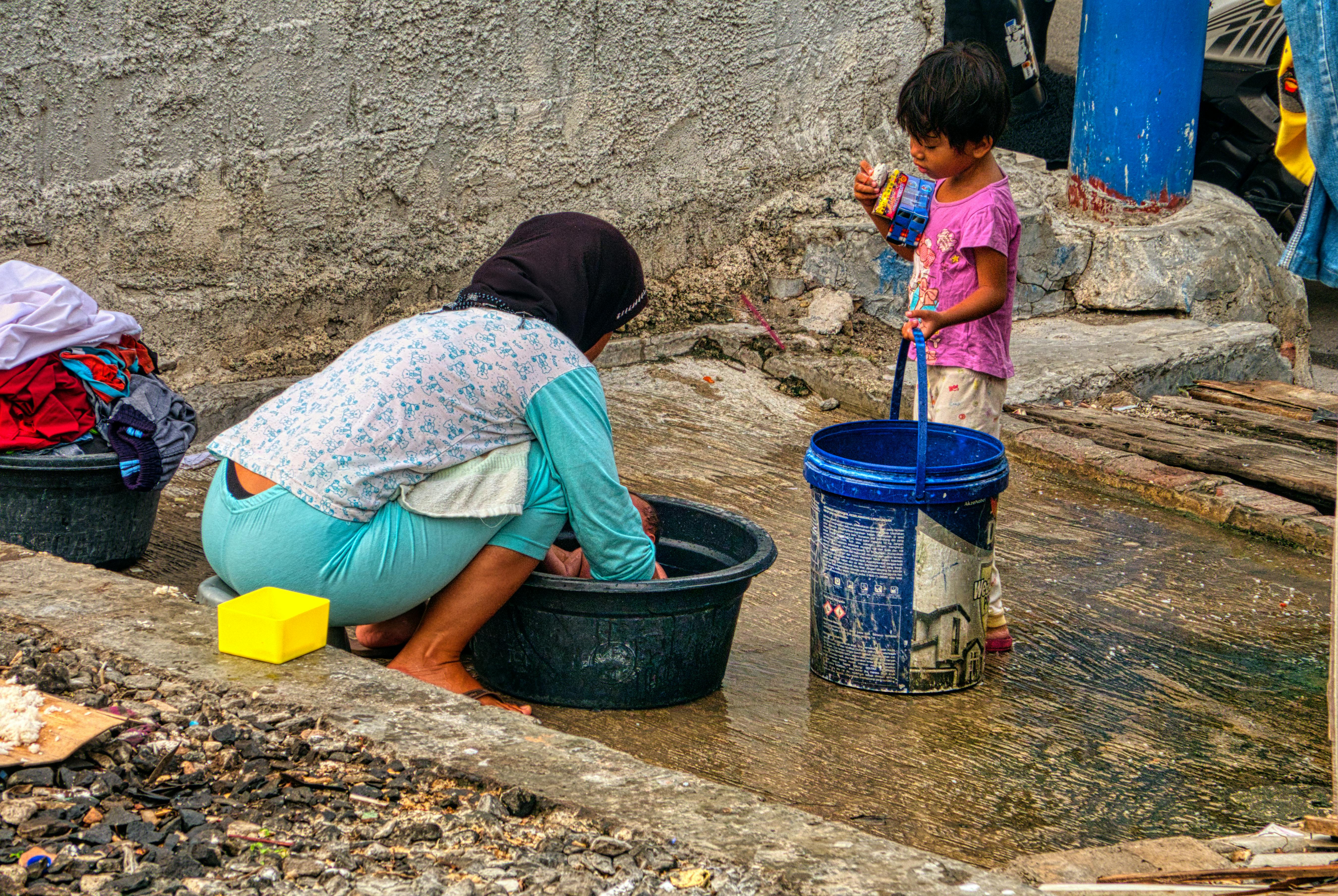Using distilled water in a humidifier is one of the best methods to ensure that your indoor air remains clean and healthy. Distilled water is free of minerals, metals, and other contaminants that can be picked up from tap water. Not only does this help your humidifier to work more effectively, but it also helps to reduce the risk of bacteria and other airborne particles being released into the air. In this article, we will discuss why it is important to use distilled water in a humidifier and other considerations you should take into account.Distilled water is water that has been boiled and then condensed back into a liquid form. The boiling process removes any impurities, minerals, and contaminants from the water, making it much purer than regular tap water. Distilled water is often used in medical settings and in laboratories due to its purity. It is also used for drinking purposes in some places.
What Is a Humidifier?
A humidifier is a device used to increase the humidity, or moisture, in the air. It is especially useful during the winter months when humidity levels drop significantly and can make the air feel dry and uncomfortable. Humidifiers come in a variety of shapes and sizes, from small tabletop models to large floor models. Some are portable and can be moved from room to room, while others are permanently installed in one location. Many humidifiers also come with features such as built-in fans or timers that allow users to set specific humidity levels.
Humidifiers are often used to help treat medical conditions such as asthma, allergies, and eczema. They can also help reduce static electricity in homes by increasing the humidity level in a room. In addition, they can help preserve wood furniture and floors by preventing them from drying out and cracking due to low humidity levels. Finally, they can help make breathing easier by increasing the moisture content of the air that is inhaled.
What Are the Benefits of Using Distilled Water in a Humidifier?
Using distilled water in a humidifier offers several benefits, including better air quality and improved health. Distilled water is free from contaminants that can be present in tap water, making it an ideal choice for humidifiers. The absence of these contaminants also helps to reduce mineral deposits that can build up in a humidifier over time. This buildup can cause the unit to become clogged and potentially malfunction.
Another benefit of using distilled water is that it will not leave behind any unpleasant odors or residue. Tap water contains trace amounts of chlorine which can leave behind an unpleasant scent when used in a humidifier. By using distilled water, you can avoid this issue and ensure your home remains fresh and odorless.
In addition to these benefits, using distilled water can also help improve your health by reducing allergens in the air. Tap water contains trace amounts of iron and other metals which can easily become airborne when used in a humidifier. This can irritate allergies and other respiratory issues such as asthma or bronchitis. By using distilled water, you will not only reduce mineral build-up but also reduce the risk of airborne allergens that may aggravate respiratory conditions.
Overall, using distilled water in a humidifier has several advantages for both air quality and health. It is free from contaminants that may be present in tap water, eliminating the chance of mineral buildup or unpleasant odors from chlorine residues. Additionally, it reduces the risk of airborne allergens that could irritate allergies or other respiratory conditions. For these reasons, it is recommended to use distilled water in your home’s humidifier for optimal performance and improved air quality.
Risks of Not Using Distilled Water in a Humidifier
Using tap water or other untreated water in a humidifier can lead to a number of risks. The most immediate of these is the potential for bacteria and mold growth. Tap water contains minerals, organic matter and other contaminants that can become breeding grounds for bacteria and mold. These organisms can be released into the air when the humidifier is running, causing respiratory irritation and infection.
In addition to the potential health risks, using untreated water in a humidifier can also lead to damage to the appliance itself. Minerals such as calcium and magnesium found in tap water can build up inside the humidifier over time, leading to clogging and corrosion of internal components. This can reduce the efficiency of the humidifier or even cause it to malfunction entirely.
Finally, it’s important to note that not all humidifiers are designed for use with tap water. Many require distilled or demineralized water in order to function properly and reduce the risk of damage or contamination. Using untreated water may void any manufacturer warranties that come with your humidifier, so it’s important to read product instructions carefully before using it.
How to Clean a Humidifier With Distilled Water
Cleaning a humidifier with distilled water is essential for keeping your humidifier functioning properly and preventing potential health risks. Distilled water helps remove bacteria, minerals, and other contaminants that can build up in the tank and reduce the efficiency of the humidifier. Here are some steps to follow when cleaning your humidifier with distilled water:
1. Empty and rinse the tank. To begin, empty out the tank of any remaining water and clean out any debris or residue that may have accumulated inside. Rinse out the tank with warm soapy water and then rinse again with clear distilled water.
2. Disinfect the tank. After rinsing, disinfect your humidifier’s tank by filling it halfway with distilled water and adding one teaspoon of bleach for every gallon of water used. Allow the solution to sit in the tank for at least 30 minutes before emptying it out.
3. Rinse again with distilled water. After disinfecting, rinse out the tank again with clear distilled water to remove any leftover bleach residue from the walls of the tank.
4. Refill with fresh distilled water. Finally, refill your humidifier’s tank with fresh distilled water and reassemble all parts before turning on your device. It’s important to use only distilled water as tap or filtered tap can contain particles that can reduce efficiency or even clog up your machine.
Cleaning your humidifier regularly is essential for keeping it functioning properly and preventing potential health risks caused by bacteria or mold buildup in its tanks or filters. By following these steps using distilled water, you can ensure that your humidifier will provide you with clean, healthy air all year long!

Is It Okay to Use Tap Water in a Humidifier?
Using tap water in a humidifier is generally safe and is the most cost effective option. However, it is important to be aware of any minerals that may be present in your local tap water, as these can create deposits in your humidifier which can reduce its performance and lead to potential health risks.
Tap water that has been treated with chlorine or other chemicals is generally safe to use in a humidifier, but it is best to check with the manufacturer’s instructions first. This is because the chemicals used to treat tap water can interact with the humidifier’s components and cause damage over time.
If you live in an area where the tap water contains high levels of minerals such as calcium and magnesium, then it is best to use distilled or purified water in your humidifier instead. These minerals can form deposits on the surfaces of a humidifier which can reduce its performance and potentially lead to health risks due to mold growth or other airborne contaminants.
It is also important to regularly clean and maintain your humidifier according to the manufacturer’s instructions. This will help prevent buildup of mineral deposits, as well as other contaminants like dust mites or bacteria which can cause respiratory problems if inhaled.
In summary, it is generally safe to use tap water in a humidifier, but you should always check with the manufacturer’s instructions first. If you have hard water containing high levels of minerals, then using distilled or purified water instead may be better for both performance and health reasons. Finally, regular maintenance and cleaning are important for avoiding any buildup of contaminants inside your humidifier.
How Can I Tell if My Humidifier Needs Cleaning?
The best way to tell if your humidifier needs to be cleaned is by looking for signs of mold, mildew, and bacteria growth. If you notice any of these signs, then it’s time to clean your humidifier. If you don’t notice any visible signs, then it’s still a good idea to clean your humidifier regularly. Regular cleaning and maintenance will help keep your humidifier functioning properly and last longer.
Another way to tell if your humidifier needs to be cleaned is by checking the water level in the tank. If the water level has dropped significantly or the water has a yellowish hue, then it’s time to clean the tank. This could indicate that there is an accumulation of dirt and bacteria in the tank that needs to be removed.
Finally, you can tell if your humidifier needs cleaning by checking for a musty smell coming from the unit. This could indicate that there is mold or mildew growing inside of the humidifier and should be cleaned immediately. If you notice any of these signs, then it’s important to clean your humidifier as soon as possible to ensure its proper functioning and longevity.
How Often Should You Change the Water in Your Humidifier?
Maintaining your humidifier is essential to keep it working properly and to help prevent the growth of bacteria and mold. One important step of maintaining your humidifier is changing the water regularly. How often should you change the water in your humidifier?
The frequency of changing the water in your humidifier depends on several factors, such as the type of humidifier you have, how often you use it, and the type of filter you use. Generally speaking, it is recommended that you change the water in your humidifier every three days if you are using an evaporative or ultrasonic humidifier. If you are using a warm-mist or cool-mist humidifier, it’s best to change the water every one to two weeks.
If you use a filter in your humidifier, keep an eye on its condition and change it regularly as well. The majority of filters need to be replaced at least once a month. Some filters may need to be changed more frequently if they become clogged with dirt or other debris. Make sure to check your manufacturer’s instructions for specific recommendations about when to replace your filter.
In addition to changing the water in your humidifer regularly, it is also important to clean it regularly as well. Cleaning your humidifer helps keep mold and bacteria from growing and keeps air quality healthy. Depending on what type of humidifer you have, refer to its user manual for specific cleaning instructions.
Overall, changing the water in your humidifer regularly is essential for keeping it running smoothly and preventing unhealthy air quality in your home. Make sure that you know how often is recommended for changing both the water and filter depending on what type of humidifer you have.

Conclusion
Overall, it is not necessary to use distilled water in humidifiers. Depending on the type of humidifier you have, it is possible to use tap water without experiencing any adverse effects. It is important to change the water regularly, clean your humidifier and check for mineral deposits to ensure that your device runs efficiently and effectively.
However, if you want the absolute best performance from your humidifier or live in an area with hard water, then using distilled or demineralised water is recommended. This will help to prevent any mineral buildup which can damage the device and reduce its lifespan.
Ultimately, whether or not you should use distilled water in a humidifier depends on your individual needs and preferences. If you are unsure, then it is advisable to speak with a professional who can provide guidance on how best to maintain and care for your device.

